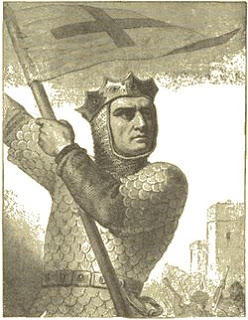My other blogs are:
http://religion-by-kyle.blogspot.com
http://astronomy-by-kyle.blogspot.com
My History Site Outline (with Links and Bibliography)
SECTION 1: Medieval Europe
Early to Late Mycenaean and Minoans, and the Near East neighbors the Mycenaean's pissed off regularly (Syrian Coasts//mostly just Bedouin), and Classical Greeks for later articles prior to Roman expansion ~300's B.C.
Proto- to Ancient Egyptians, Sumarians//Akkadians//Bedouin, Hurrians, Hittites, and some tid-bits of early Rome and a struggling Greece
Lots of Romans from Mid to End of Roman Empire (over 1000 years!), the Byzantine Empire, and the All the Fun-loving Near Eastern Cultures!
(and liked in small doses but shed cultural lights)
SECTION 1: Medieval Europe
- Medieval Europe Part 3: Of Kings and Killers Pt. 3-- Ignition of the First Crusade
- Medieval Europe Part 2: Of Kings and Killers Pt. 2-- Here Come the Norsemen!
- Medieval Europe Part 1: Of Kings and Killers Pt. 1-- Rise of Charlemagne and Fiefdoms
- Imperial Rome Part 3: 3rd Emperor Caligula- The Man Who Lost His Mind
- Imperial Rome Part 2: Ostrogoths and Visigoths- The Ancient Germans and an Expanding Rome
- Imperial Rome Part 1: Emperor Nero- The Man Who Fiddled While Rome Burned
- The Ancient Republic of Rome Part 3: Iulius Caesar and Pompey the Great
- The Ancient Republic of Rome Part 2: The Pyrrhic War Against Rome
- The Ancient Republic of Rome Part 1: A Brief Essay on the Birth of Rome on Palatine Hill
- Alexander the Great: The Greek Empire Ruled by A Madman
- The Greek Golden Age and the Great Peloponnesian War
- Lacedaemonians and Athenians: Battling Persians at Thermopylae and Salamis
- The Origins of the Persians and the Battle of Marathon Against Ancient Greece
- Of Minoans and Mycenaeans: The Rise and Fall of Proto-Greeks and the End of the Bronze Age
- Empire of the Hittites: Battling the Hurrians and Middle Egypt-- Bronze Age Superpowers
- Ancient Egypt: Narmer Menes and the Rise of the Pharaohs
----------------------------------------------------------
B I B L I O G R A P H Y
(my sources so far...without specifics to prevent plagiarism
(my sources so far...without specifics to prevent plagiarism
I read a lot and most of these are from
my college classes and studies, so most of the books
were picked by my professors)
----------------------------------------------------------
(EARLY BRONZE) ANCIENT AND CLASSICAL GREEKSEarly to Late Mycenaean and Minoans, and the Near East neighbors the Mycenaean's pissed off regularly (Syrian Coasts//mostly just Bedouin), and Classical Greeks for later articles prior to Roman expansion ~300's B.C.
- The Mycenaean World, Chadwick, John
- The Decipherment of Linear B (Canto), Chadwick, John
- The End of the Bronze Age, Drews, Robert
- The Coming of the Greeks, Drews, Robert
- Ancient Greece: From Prehistoric to Hellenistic Times (Yale Nota Bene), Martin, Thomas R.
- The Oxford Handbook of the Bronze Age Aegean, Cline, Eric H.
Proto- to Ancient Egyptians, Sumarians//Akkadians//Bedouin, Hurrians, Hittites, and some tid-bits of early Rome and a struggling Greece
- The Ancient Near East, Volume I: An Anthology of Texts and Pictures, Pritchard, James B.
- The Ancient Near East, Volume II: A New Anthology of Texts and Pictures, Pritchard, James B.
- The British Museum Concise Introduction to Ancient Egypt, James, T.G.H.
- A History of the Ancient Near East ca. 3000 - 323 BC [Blackwell History of the Ancient World Ser.], Van de Mieroop, Marc
- A History of the Ancient Near East: ca. 3000-323 BC (Blackwell History of the Ancient World), Van de Mieroop, Marc
- A History of Ancient Egypt (Blackwell History of the Ancient World), Van de Mieroop, Marc
- The Penguin Historical Atlas of Ancient Rome, Scarre, Chris
Lots of Romans from Mid to End of Roman Empire (over 1000 years!), the Byzantine Empire, and the All the Fun-loving Near Eastern Cultures!
- Introduction to Medieval Europe, 300-1550: Age of Discretion, Bockmans, Wim and Hoppenbrouwers, Peter
- I lost my second book that I've obtained Medieval Europe sources from for the same time period of A.D. 300 to 1550. It focused on letters between Christian leaders and politicians, the development of the Catholic Church among the barbarians, and the terrible power struggles between the Popes and Kings/Emperors throughout the ever-changing Western societies and the Byzantine Empire.
(and liked in small doses but shed cultural lights)
- The Epic of Gilgamesh (Penguin Classics), George, Andrew
- The Poems of Hesiod, Frazer, R.M.











































